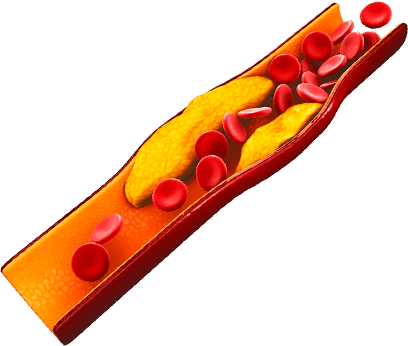Atherosclerotic plaques form in the arteries when there is a metabolic dysfunction and a high concentration of low- and very low-density lipoproteins (LDL and VLDL) in the blood. These substances saturate the inner vessel wall, forming lipid spots where dense plaques then form, making the vascular lumen smaller, destroying the vessel wall and increasing the risk of thrombosis and accompanying thrombotic complications.
Peripheral vascular disease affects about 2.5% of the world population. In the USA, Europe and other developed countries, the morbidity rate in the 45-50 age group is 5.3%. Prevalence increases with age, the disease striking as many as 15% of the population by the age of 85. People in developing countries suffer the disease somewhat less often.
PVD is diagnosed late, when complications are already becoming apparent, in nearly half of all patients. If appropriate treatment is not given, nearly a third of patients die within five years of the first signs appearing, and indications for amputation occur in 50%.




